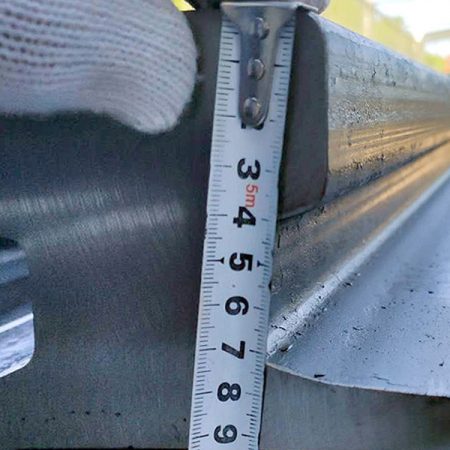รางเครน DIN536 A150 เป็นรางชนิดหนึ่งที่ใช้กันทั่วไปในเครนและรางอุปกรณ์สําหรับงานหนัก. มีโปรไฟล์เฉพาะที่ได้มาตรฐานโดยสถาบันมาตรฐานเยอรมันเพื่อการมาตรฐาน (ดิน) และได้รับการออกแบบมาให้ทนทานต่องานหนัก. รางประเภทนี้ใช้กันอย่างแพร่หลายในท่าเรือ, คลัง สินค้า, และการตั้งค่าอุตสาหกรรมอื่น ๆ.
รางเครน DIN536 A150 มีคุณสมบัติดังต่อไปนี้:
– น้ําหนัก: 150 กก./ม.
– ความยาวมาตรฐาน: 12 เมตร
– เกรดเหล็ก: U71Mn
– ความกว้างของหัว: 150 มิลลิเมตร
– ความสูง: 150 มิลลิเมตร
– ความกว้างด้านล่าง: 220 มิลลิเมตร
– ความหนาของเว็บ: 80 มิลลิเมตร
DIN536 A150 crane rail is commonly used as a support structure for overhead cranes and other heavy-duty lifting equipment. The rail provides a stable and durable base on which the crane can move, allowing it to transport heavy loads with ease. นอกจากนี้, it is often used to create tracks for other types of heavy machinery, such as gantry cranes and trolleys.
A150 crane rail is also commonly used in harbors, เหมือง, and other industrial settings where heavy loads need to be moved over long distances. ความสามารถในการรับน้ําหนักสูง, durability and resistance to wear makes it ideal for such applications.
The DIN536 A150 crane rail is used in many countries worldwide, particularly in Europe, เอเชีย, และแอฟริกา. Some of the countries where this type of rail is commonly used include Germany, ฝรั่งเศส, the United Kingdom, เบลเยียม, รัสเซีย, จีน, แอฟริกาใต้, and Saudi Arabia. It is also used in various other countries where heavy industries such as mining, พอร์ต, and power plants are present.
The installation process for the DIN536 A150 crane rail involves several steps:
1. Surface preparation: The surface of the footing must be clean and free of debris, and all loose particles must be removed. If the footing is not level, it should be leveled using a concrete leveling compound.
2. Alignment: The rail should be aligned to avoid any twisting, kinking or high curvature. The rail should be aligned along the axis of the crane runway.
3. Anchoring: The rail should be anchored to the footing with anchor bolts. The number and size of the bolts will depend on the load and specific requirements of the installation site.
4. Grouting: Grout is then used to fill the gap between the rail sole and the footing. This helps to provide additional support to the rail and fix it in place. The grout should be allowed to cure properly before any loads are applied.
5. ตกแต่ง: The surface of the rail should be protected with a coating to prevent rust and corrosion.
It is essential to follow the manufacturer’s instructions and consult with a professional engineer for the installation process to ensure that it is done safely and correctly.
เราสามารถจัดหารางด้านล่างแบนมาตรฐานสากลดังต่อไปนี้, if you need any one, โปรดอย่าลังเลที่จะถามเรา:





